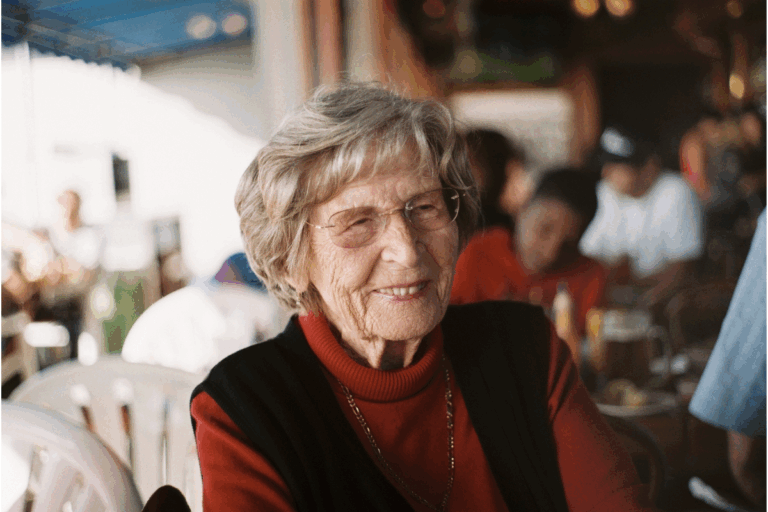Domestic and family violence is often mistakenly thought to only involve physical abuse, but this isn’t always the case.
There is no one single definition of domestic and family violence (DFV) that exists. However, all definitions involve a range of violent behaviours, including physical and non-physical forms of abuse. These actions cause harm through fear and intimidation that significantly impact the safety, autonomy and wellbeing of people experiencing abuse.
This article outlines some of the types of DFV that can occur in relationships and families to show how complex these behaviours can be, and the impact they have.
Here are 10 different types of DFV, illustrating just how varied – and damaging – abusive behaviours can be.
Coercion and threats
Coercive control involves using a range of tactics which try and force the victim survivor into bending to the perpetrator’s will.
From 1 July 2024, coercive control was a criminal offence in NSW when this abusive behaviour is used against a current or former intimate partner.
This type of DFV can involve:
- Threatening self-harm or suicide
- Stopping someone from being able to follow their religious or cultural practice
- Threatening to make false reports about you to child protection authorities or the police
- Insisting on any legal charges against them being dropped
- Making threats to harm other family members
- Insisting you do illegal things or implicating you in the blame for illegal things they have done.
Physical abuse
Physical abuse is possibly the most easily recognisable form of DFV, and can include:
- Pushing, shoving or grabbing
- Poking, slapping, hitting, punching or kicking
- Pulling hair or scratching
- Using a knife or other weapon
- Hurting children or pets.
Intimidation
Intimidation is a type of DFV which attempts to control the victim-survivor by forcing them to change any behaviour that the perpetrator doesn’t like. It can include:
- Yelling and screaming
Actions, gestures and looks that are threatening in their nature - Breaking or destroying furniture and property, punching walls, throwing things or pounding tables
- Displaying weapons
- Driving recklessly while you are in the car
- Stalking you or making unwanted contact.
Sexual abuse
Sexual abuse can and does happen within relationships and marriages. It can include the following behaviour:
- Insisting on or threatening you into unwanted sexual contact
- Making you feel guilty about not wanting to participate in sexual activity
- Forcing or threatening you into particular sexual behaviours
- Forcing you to watch pornography
- Forcing sex when you’re unable to say no, such as when you’re asleep or intoxicated.
Verbal abuse
Verbal abuse is another type of DFV that many are familiar with, and can include:
- Name calling, derogatory comments, insulting and contemptuous behaviour, ridicule
- Being insulting about the victim survivor’s appearance, achievements, beliefs and preferences, spirituality, or friendships
- Cutting the victim survivor off into silence.
Emotional abuse
Victim survivors of emotional abuse often have their self-esteem and self-worth damaged. This can affect their lives in numerous ways, from having difficulties reaching out to friends, to engaging in study or work. Emotionally abusive behaviours can include:
- Giving you the silent treatment
- Making light of your upsets and concerns, denying and minimising their impact and ridiculing you for naming the problem
- Calling you “too sensitive,” playing mind games or making you feel crazy (also known as gaslighting)
- Humiliation and shaming, either publicly or privately
- Using jealousy to justify their actions
- Trying to guilt you as a control mechanism
- Using your love or goodwill against you – for example, “if you loved me you would…”
Isolation
Isolating behaviours aim to intentionally separate the victim survivor from their regular support networks, such as friends, family, jobs and hobbies. Isolating behaviours include:
- Controlling who you can see and where you can go
- Limiting spending money and tracking expenditure
- Controlling what you wear, watch or read
- Refusing you access to a driver’s licence or car
- Insisting on when you should be home and checking up on you while out.
Financial abuse
Financial abuse is a pattern of behaviours where one person is limited or unable to access, maintain or use their economic resources, including money. They include:
- Controlling access to family money
- Making all the decisions about finances and spending on behalf of you both
- Insisting that paying for family bills is unreasonable
- Impacting the victim survivor’s ability to earn own money or maintain employment
- Taking the victim survivor’s money
- Incurring debts on behalf of you both without your consent.
Minimising, denying or blaming you for their behaviour
Many users of violence refuse to acknowledge the role they played in relationships concerns, and instead defend or justify their behaviour by:
- Ridiculing you for any concerns you raise
- Minimising the harm they have done to you
- Insisting on you covering up any signs of their abuse, like bruises
- Insisting on other stories about the relationship being told to others that make them look better
- Blaming you for the abuse
- Blaming you for their drug and alcohol abuse, or problems with gambling.
Using children against you
Users of violence also sometimes use children to try and control and harm their partners, whether they are the child’s parent or not. Behaviours that can involve children include:
- Asking children to relay messages, or covertly using them to threaten you, by placing notes in their bags or clothing for example
- Purposely turning up late to appointed contact with the children or refusing to bring them back on time
- Using access visits to threaten and harass you
- Telling the children you are to blame
- Actively turning the children against another parent
- Threatening to take the children away from you.
Multiple types of DFV may be present in one relationship, and behaviours can sometimes escalate and change from one type of violence to another. People who have experienced DFV describe how the user of violence would use different behaviours together to restrict and control their lives.
Generally, people who use violence will attempt to minimise the victim survivor’s protests or resistance to their treatment. If the victim survivor calls out the behaviour, the user of violence either refuses to change, or their behaviour becomes worse.
Is all bad behaviour in relationships classed as domestic and family violence?
Some of the behaviours mentioned above, if they occur in isolation, may not necessarily constitute DFV. For example, yelling at your partner or calling them names may be hurtful, but may not be abusive if it happens in isolation.
Similarly, accumulating hidden debts may be indicative of a gambling or other issue, rather than an intentional attempt to deceive someone’s partner.
To understand whether someone’s behaviour towards their partner or other family member is considered DFV, we sometimes need to look beyond individual incidents and analyse the potential user of violence’s behaviour over time. If the person is using these harmful behaviours to control another person’s actions, it would usually be considered domestic and family violence.
The difference between domestic violence and family violence
Domestic violence usually refers to violence used against a current or former intimate partner, such as a spouse, girlfriend or boyfriend, or de facto partner. It can happen in relationships where people are different genders or the same gender as each other, and it may even start for the first time after the end of the relationship and continue for many years after.
Family violence is an umbrella term that includes domestic violence but refers more broadly to a person using violence against anyone they have a family relationship with. This could be their partner, but it might also be a parent, sibling, child, or anyone else in their extended family or kinship network.
In NSW, ‘family’ is defined broadly in relation to domestic and family violence. It includes people related by blood, marriage, de facto partnerships, adoption and fostering, extended family, and the full range of kinship ties in Aboriginal and Torres Strait Islander communities. It also includes ‘chosen’ family in LGBTQIA+ communities and can include people living in the same house or residential facility.
You might also hear other terms related to forms of family violence experienced by specific groups of people. For example, ‘elder abuse’ is a form of family violence experienced by older people, often by their children or carers. ‘Adolescent violence’ is a form of family violence where the person causing harm is an adolescent child, with violence usually directed at a parent or sibling.
How to get help if you’re experiencing any type of domestic or family violence
If you suspect that you or someone you know is experiencing domestic and family violence of any form, it’s important to seek help straight away.
Abusive behaviours don’t change on their own and can escalate. When it’s safe to do so, call 1800RESPECT (1800 737 732). In an emergency, always call 000.
Relationships Australia NSW provides a domestic and family violence support called Women’s Choice and Change, as well as our Family Advocacy and Support Service for men who have experienced domestic and family violence.
Related Services & Workshops

Group Workshops.Individuals.Trauma
Women’s Choice and Change
This program is a free domestic violence support group for women. Our family therapists provide a safe and caring space to share and learn from others who understand your experiences. Skills and strategies are provided to help you move forward with your life.

Counselling.Individuals.Trauma
Domestic Violence Counselling
We all have the right to feel safe. Taking the first steps to speak to someone about domestic and family violence can be conflicting and overwhelming. At Relationships Australia NSW, we provide compassionate, understanding, and confidential domestic violence support for victims.

Tailored Services.Individuals.Domestic Violence
Family Advocacy and Support Service
The Family Advocacy and Support Service (FASS) is a free service which supports men going through the Family Court system in cases of domestic and family violence. By offering aid to both perpetrators and victims, we aim to encourage long term positive behaviour change.






